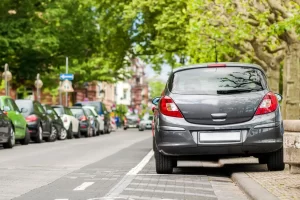Q&A: SHNS Talks Allston I-90 With A Better City’s Tom Ryan
Discusses Transformational Plans For Allston Infrastructure Megaproject
SEPT. 13, 2024…..Since Massachusetts learned in March that it had received $335 million in federal funding for its long-awaited Allston infrastructure megaproject, the scope and finances of the work have been spotlighted and scrutinized. Tom Ryan, a senior advisor on policy, government and community affairs for Boston-based nonprofit A Better City, has been at the helm of trying to understand how the project’s puzzle pieces fit together.
For a project with very little, if any, opposition, it has been talked about for nearly a decade — about the same amount of time until it’s complete, according to the latest estimates from planners. But despite the wait, the transformative overhaul is further along than it has ever been before, in what Ryan calls a “new era” of planning.
In a conversation with the News Service, Ryan discussed the fiscal scope of the project, challenges and expectations along the way, and where A Better City imagines the project is headed.
This interview has been edited and condensed for clarity and length.
Q: There are so many aspects to this project. Can you hit the highlights?
A: I would say this is the best public infrastructure project in New England. It’s a great opportunity to take a crumbling, structurally deficient, elevated highway and replace it in this little area of the Mass. Pike in Boston, with a straighter road on the ground level. That opens up space for new development and new housing. But also, you would be served by a new transit station, called West Station, and much better public access for safe, dedicated bike and pedestrian lanes. So there’s a lot of elements to the project. It’s not just a highway project.
By giving people the option to take transit, and having safe bike lanes, safe pedestrian access, it’s going to help encourage mode shift, obviously. The number of [highway] lanes in the area, under the current plan, is the same as exists now from the Turnpike lanes and Storrow Drive. So it’s not expanding highway or roads, it’s providing a viable option for transit for [people] outside of the region to get to this new neighborhood. It helps expand park space on the Charles River by four acres, and it will also help with the shoreline of the Charles River in this area that is currently eroding.
Q: Let’s zoom in on the financial part. There’s cash coming in from the Biden administration, city universities and the state, and the estimated cost sits at almost $2 billion. Where do funding gaps still exist in this project?
A: This finance plan is new as far as the application and has multiple sources of funds, but it also is really the first finance plan to do the project. So this is, again, a new phase for everyone both in government and outside the government.
I like to describe that in simple terms for the casual observer of the project: the federal funds from the grant is $335 million and the finance plan also says the state will be applying for a federal infrastructure loan that’s roughly $500 million. The state has to apply for this grant, but it’s a very long-term loan. So that’s non-state funds. The City of Boston, Harvard and BU are committing, together as a group, $300 million for the project. Now you’re talking [about] what’s left, [which] is generally just state money to do the project. And that’s less than a billion dollars from using some of the “millionaires” surtax or the “Fair Share” money; some money from existing toll revenue, nothing that would change any toll rates, but it’s a smaller piece of the state’s commitment — they are collecting tolls in Allston, so they would just use some of the money that they’re currently collecting to pay the project over the next eight or 10 years; and then the state’s general transportation Capital Infrastructure Fund. But when you put the state’s category together, it’s less than a billion dollars for this $2 billion project. So I like to say the state is getting this at half price.
Q: There was some reporting done about how MassDOT is now including money for the project in its five-year capital investment plan. Could you clarify where this fits into that plan?
A: The MassDOT budget was revised to include spending on the Allston I-90 Multimodal Project — they added money after it was released for public comment, for Allston, that is consistent with the federal grant. The public should understand that the grant money is going to be spent in the next couple of years, and it’s consistent with the timeline needed, as part of the application. The five-year state capital spending plan is just now telling the public [that piece]. So it’s a little confusing on how the rollout happened, but I think one reason why it got some attention and probably confusion is that the state is still trying to figure out the exact schedule of the project, and when spending will happen.
The state can’t just spend 100 percent of the federal infrastructure grant — it’s easy to think about it as, you could probably spend 80 percent of it, as long as you’re putting 20 percent in as well. [The state also] can’t just say, “Alright, we’re only going to spend the federal money, and then when we’re done with that, we’ll start spending state money, and when we’re done with state money…” — it’s always a mix. It’d be weird if the federal government gave out the money and then let you only spend their money without proving you have your own match or contributions. So it’s going to be a mix of funds between now and [2026], when they’re going to finish the permitting, finish the design, and award the project. So the technical term of “construction” or obligating the funds [begins] by fall of 2026.
Q: Can you explain the timeline?
A: The timeline starts maybe 10 years ago, when planners and the Massachusetts Department of Transportation were thinking about what to do with this elevated road that needed to be replaced. So we are at the point today, almost at the beginning of a new era, in what this project is because of the federal grant. This project is real because there’s a finance plan and federal funding that would support it. Over the past 10 years, it’s been a lot of planning and thinking without, “How do we pay for this project?” — “We” being the state, the city and the region.
The federal grant requires starting construction in the fall of 2026. So where we are in the timeline is we need the state and the city to finish some environmental permitting work, send the project out for procurement, which would then be considered starting construction. And so [in the next year], the secretary of transportation has committed to finishing the environmental permitting work, which will be [on] an accelerated timeline. After the project starts construction, it’s about a six-to-eight year timeline to complete all the construction work. So we think about this now as eight-to-ten years before the project is complete.
Q: A decade is a long time to be thinking and planning for something and not being able to secure funding for it. What’s different at this point in time? Is there any opposition remaining?
A: There is a large coalition of support on the type of design to do the project. At first, some people thought, “Well, why don’t we just keep the elevated structure where it is? We don’t need to realign the highway.” That was the simplest thing people were arguing. Advocates from the community of Allston were saying, “Maybe if you bring it down to ground level, we’ll have better access to the Charles River in Allston.” The turnpike, when it was built in the 1960s, went right through parts of Allston, and now we can take down this highway because there is a possibility to put the road at ground level and create the space for a West Station and new bike lanes [and] pedestrian access. So what’s new is that the design plan is putting the highway at ground level. Two or three years ago, the Department of Transportation was thinking the plan should be to keep the structure elevated, which would prohibit a lot of the benefits for transit and pedestrian and bike access that are possible and a really big part of the current project.
I’d say that, for complicated projects like this, there’s always going to be some skepticism that you can do it. And because this has been going on for a long time with the planning, you can see this really strong coalition of transit advocates, environmental advocates, elected officials, people in the community, people from Worcester.
Q: Touching on the West Station portion of this project — how does that fit in here? What benefit is that station providing?
A: West Station has a couple of phases, but it’s not planned to be just a commuter rail station for the Worcester-Framingham Line. It’s thought of as a hub for buses that would serve the area. Also, you would think of West Station as a future connection to the Kendall Square area — over what’s called the Grand Junction Bridge, over the Charles River, [connecting] with Kendall Square, and hopefully to North Station for better transit connections that serve this whole neighborhood. West Station is not just a commuter rail stop.
Q: When you say “connection to Kendall Square,” “connection to North Station” — are those other projects that are down the line?
A: So the Grand Junction Bridge, an existing bridge in the area, is not part of the Allston I-90 project, but it is talked about as being designed for what’s next. [The plans would make] a real robust West Station that can make connections over to Kendall and towards North Station. So we could say that may be a “phase two” — and it’s been planned so that you first need to do the foundation of West Station.
Q: In terms of rollout of these aspects, is there going to be one portion that’s done before the other? It’s a decade down the line, but do we know at all how that will be phased?
A: It’s definitely a phased project, because it’s very complicated. I can go into detail on how A Better City thinks the phases of the project will go — we prepared a construction staging plan about 18 months ago that was generally adopted by MassDOT, although when the design/build contractor is awarded the work for the full project, that firm will have its own staging plan. I feel comfortable saying this is likely how it will go, because we have staff that worked on the Central Artery Tunnel project and we know how to successfully stage the construction of complex highway/multimodal transportation project.
What we suggested generally is the Paul Dudley White pedestrian and bike path built early along the edge of the Charles river to move those users out of the way of construction in the “throat” area, along with the opportunity to rebuild the edge of the river early in the project. Next in line would be realigning Soldiers Field Road, followed by completion of the westbound lanes of the Turnpike, then the eastbound lanes, and finally the rail lines. It is easy to think of this as a north to south approach, with the Charles River being the northern part of the project site.
I think in general terms, if the implementation follows the approach A Better City imagines, my very broad guess is that the Paul Dudley White path could be open as early as 2029, westbound Turnpike lanes by 2031 or 2032 in the Throat, eastbound lanes by 2032 or 2033, and at least partial new interchange ramps by 2034 or sooner, rail operations in place soon after. But that is a very broad guess.



